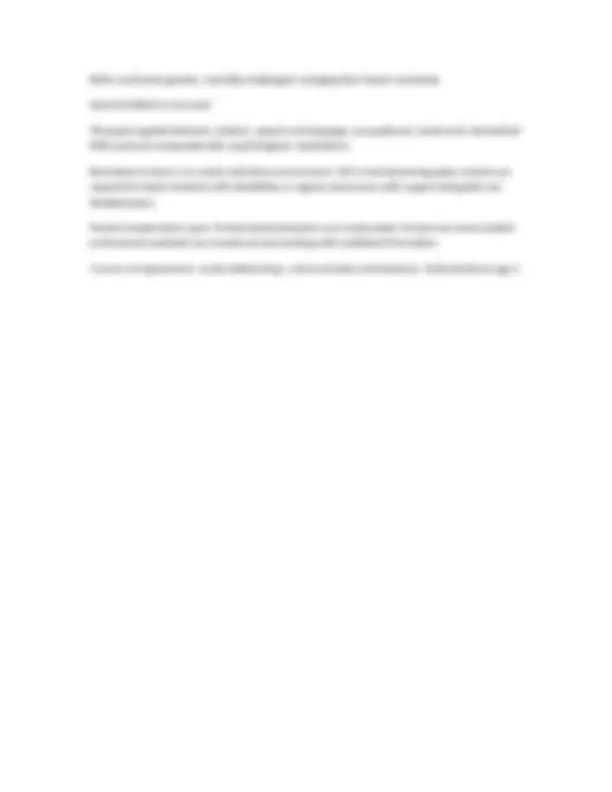



Study with the several resources on Docsity

Earn points by helping other students or get them with a premium plan


Prepare for your exams
Study with the several resources on Docsity

Earn points to download
Earn points by helping other students or get them with a premium plan
Community
Ask the community for help and clear up your study doubts
Discover the best universities in your country according to Docsity users
Free resources
Download our free guides on studying techniques, anxiety management strategies, and thesis advice from Docsity tutors
An overview of autism spectrum disorders, including their defining characteristics, different types such as autistic disorder, asperger syndrome, and rett's syndrome, prevalence rates, and associated challenges in social relationships, communication, and behavior. It also discusses various therapies and the importance of inclusive education.
Typology: Study notes
1 / 2

This page cannot be seen from the preview
Don't miss anything!


Marked impairments in social interaction. Lack normal interest in social contact, don’t seek or enjoy affection and seem aloof and alone. Deficits in language development and imaginative activity- fail to develop language or show a range of language abnormalities. May repeat phrases or fail to use pronouns I and you appropriately also lack imaginative play. Restricted scope of activities and interests- often obsessed with sameness and show rigid repetitive behavior. Drawn to small detail and may be mesmerized by objects. Mental retardation is present in about 75% of cases yet some children have above average IQ scores Autistic disorder and other conditions involving autistic features are autism spectrum disorders
Rett’s syndrome-genetic, mentally challenged, wringing their hands constantly Savant-brilliant in one area Therapies-applied behavior analysis, speech and language, occupational, social work, biomedical DAN protocol-manipulate diet, psychological, medications. Best place to learn is in a least restrictive environment. IDA’s mainstreaming policy schools are required to teach students with disabilities in regular classrooms with support alongside non disabled peers Parents looked down upon. Professionals/educators are uneducated. Schools are overcrowded professional caseloads are maxed out and working with outdated information. 3 areas of impairments- social relationships, communication and behavior. Noticed before age 3